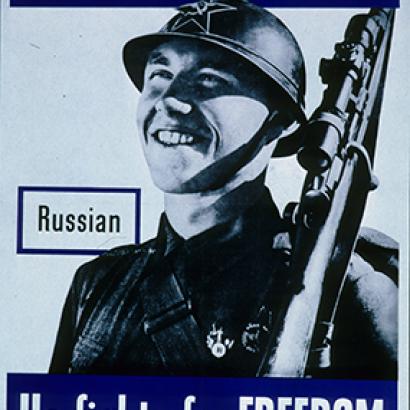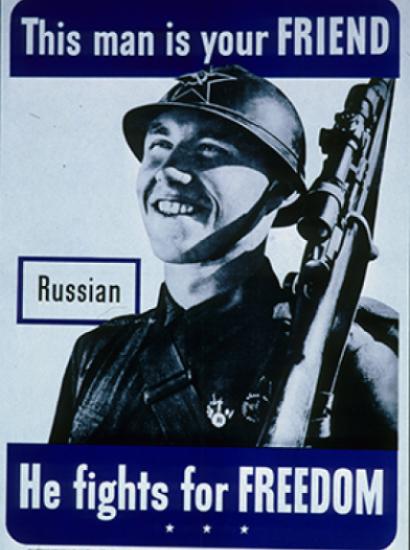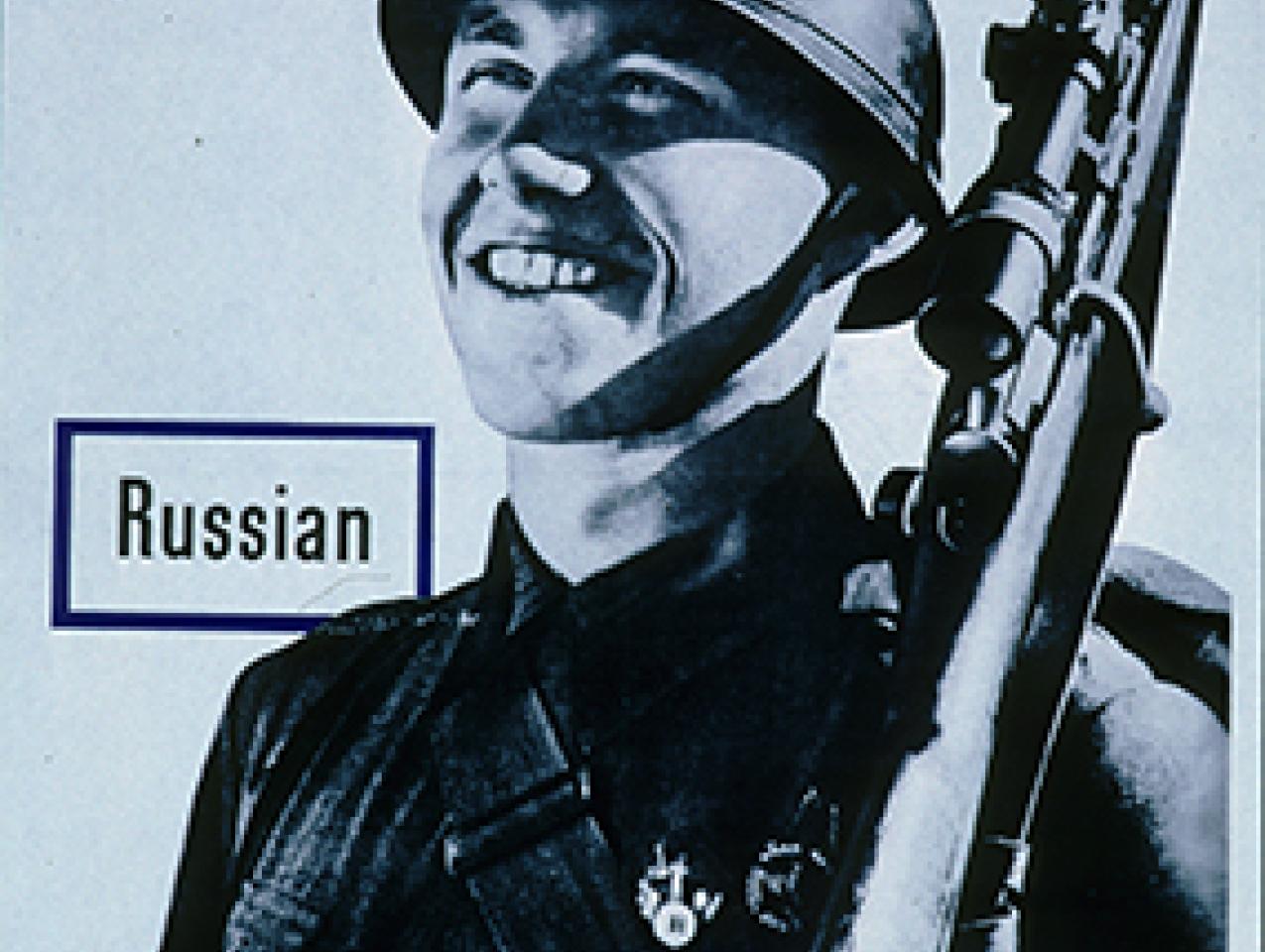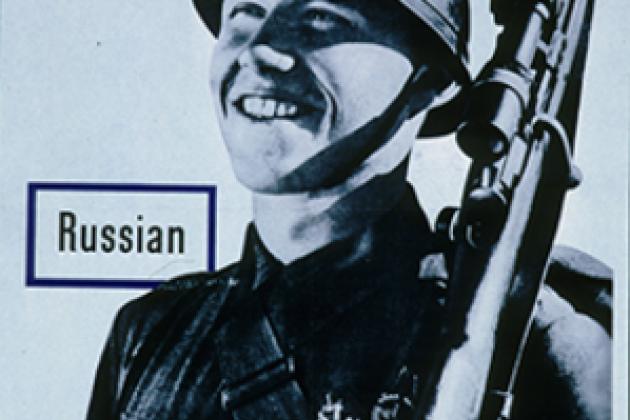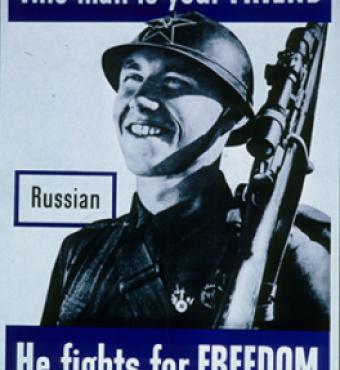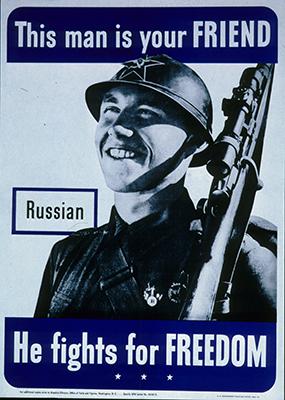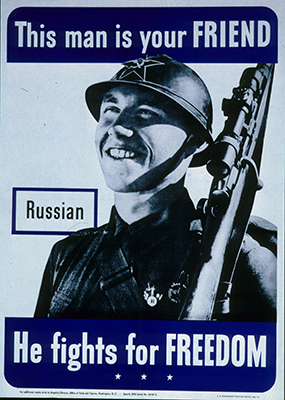
In the greatest film ever made about the human dimensions of strategy, director Stanley Kubrick’s Cold-War masterpiece, Doctor Strangelove, an excited strategic bomber pilot speaks of “noo-cullar combat, toe-to-toe with the Russkis.” But the lengthy annals of Americans and Russians tramping on each other’s feet followed a brief interlude when we danced the light fantastic to our mutual benefit, with neither side’s dancing shoes scuffed.
That was at the historic high-point of U.S.-Russian relations. In 1863.
Russia’s only liberal reformist czar, Alexander II, had freed the serfs in 1861 and had no sympathy with the slave-holding, self-proclaimed Confederate States of America, which Russia’s government declined to recognize. (Russia also worried, as it does still, about a precedent for secession movements at home.) In the latter half of 1863, the czar’s admiralty dispatched a squadron from Russia’s Baltic Fleet on a visit to Union ports and the warships—whose crews included a distinctly unseaworthy junior officer named Rimsky-Korsakov—would visit multiple harbors during their half-year stay. A second squadron from the Far East later anchored in San Francisco, willing to protect the bay against Confederate commerce-raiders.
Lincoln’s government and Northern society were ecstatic—suddenly, all things Russian were in vogue. With Great Britain and France leaning toward Richmond, the czar’s evident show of support seemed a great strategic boost.
Yet, the visits were not intended primarily as a goodwill gesture. Russia recently had been humiliated by Britain, France, Sardinia, and Turkey in the Crimean War, and with Russia suppressing yet another gallant-but-hopeless Polish insurrection with fire and sword, renewed war with Britain, at least, appeared imminent. Those Baltic Fleet ships were sent to New York to avoid being bottled up at Kronstadt, the fleet’s home port, by the much more powerful Royal Navy. By sheltering in neutral American ports, the Russian cruisers could set forth—with a strategic advantage—to raid British commerce in the North Atlantic. The squadron in San Francisco, too, was to act against British shipping, should war commence (the sailors’ most-significant “combat” action, though, was to pitch in to help fight one of the city’s recurring fires).
Despite the disparate agendas and misunderstandings of purpose, both Washington and St. Petersburg won, and neither side paid a price. Britain and its allies did not go to war against Russia and did not grant recognition to the Confederacy. Then, with the czarist government fearful that Britain would seize indefensible Alaska in any future war, Russia’s foreign ministry offered the re-united United States a deal—“Seward’s Folly”—that would rival the Louisiana Purchase as the greatest real-estate bargain of all time.
Until the Second World War, when a very different atmosphere prevailed, there would not be another example of U.S.-Russian defense collaboration—and none in which one side or the other, or both, would not end up feeling wronged.
A half-century after the balls and gala dinners welcomed the czar’s naval officers, the forgotten (by us) low-point in U.S. relations with Russia arrived. In 1918, 13,000 U.S. Army troops joined allied expeditionary forces that—setting diplomatic euphemisms aside—invaded revolutionary Russia. The declared goal was to protect stores of munitions, property, and interests, as well as to evacuate POWs. But the deployed militaries actively backed the czarist White Guards against the then-beleaguered Bolsheviks (in 1921, Herbert Hoover would oversee humanitarian missions to famine-ravaged Russia, but that was stricken from history by the Soviets).
We may have forgotten that ill-starred occupation, but the Russians never have: Indeed, in the iciest years of the Cold War, Nikita Khrushchev was glad to remind us that we had killed Russians on Russian soil (in fact, the U.S. troops on the Murmansk-Arkhangelsk front did kill and wound thousands of Russians, while those deployed to the Far East and Siberia engaged in fewer large-scale combat operations but prefigured our current counterinsurgency doctrine of embracing the people, achieving perhaps the highest venereal disease rates in U.S. Army history).
Even during the worst years of the U.S.-Soviet bipolar struggle, U.S. and Soviet forces never openly fought each other again—although there was a good deal of uniform-swapping and subterfuge. Mutual disdain did not prevent mutual restraint, and Soviet violence was directed primarily at its subject peoples.
The grand alliance against Hitler did result in a brief warming of feelings on both sides, but, beyond the diplomatic handshakes, shipments of Spam and Studebakers, and a brief heyday for fellow-travelers here, this was a cold-blooded teaming of enemies against a greater enemy, and the clearest heads in Washington and Moscow never succumbed to the notion of enduring amity. In the post-war era, both governments would purge those deemed too sympathetic to the now-estranged ally (although the “purging” in the U.S. Government was considerably more benign, if at times hysterical).
From 1945 onward, as one pretense after another crumbled, the United States and the Soviet Union became and remained enemies. Then, after nearly half a century of the Cold War, the Soviet Union came apart in 1991 and gangsters took power in Russia, just as romantics took hold of Washington’s Russia policy.
Indeed, romanticism is perhaps the most-dangerous threat to the foreign policies of free and democratic nations, inspiring abrupt shifts in temper that overlook mass atrocities in favor of swapping orchestras.
With the Soviet Union’s dissolution, American intellectuals and students of Russian affairs surrendered to an optimism utterly ungrounded in geopolitical or basic human reality. During the Clinton administration, those in positions of influence seemed to believe that, with the Soviet bogeyman gone, Russia would revert to the visokaya kultura beloved of the Kulturati, a fairy-story realm of Tolstoy and Chekhov, of Tchaikovsky and Rimsky-Korsakov, of the ballets russes, Nijinsky and Diaghilev. But the Russian culture of the Golden and Silver Ages was exterminated by Stalin in the GULag or, at best, driven into exile. The DNA is gone. Russia’s hard-won European veneer was scraped off without mercy: Russia remains the tragic land depicted by Dostoevsky and Mussorgsky, but without artists of their quality to capture it (over the years, when asked what books I would recommend to understand Russia, I suggested Dostoevsky’s The Devils—aka The Possessed—but stressed that an even better entry is through the operas Boris Godunov and Khovanshchina, which, between them, contain all of Russia).
Despite the density of Mercedes and BMWs on Moscow streets, behind the Italian-designer shops and the frenzy of pop culture, Russia is less European today than it was in 1914: It’s not a matter of what people wear or own, but of how they view the world. Vladimir Putin’s well-cut suits do not make him a statesman in the Western tradition.
We face an arthritic, spiteful nuclear power led by a brilliant, bitter leader who seeks revenge against those he views as Russia’s enemies—above all, the United States of America. And he is immeasurably dangerous. It has been observed that Putin has played a weak hand extraordinarily well. Indeed, he consistently beats the house with a pair of deuces. Yet, this genius of subversion remains willfully misunderstood by Westerners who cannot imagine, even now, that a major leader might have as his priority inflicting suffering on them or destroying their freedoms, their societies, and their lives. Spoiled by safety and cushioned by wealth, we cannot grasp the plain-as-day existence of hatred before us.
The core question isn’t whether there is still a place for realistic engagement with Russia in U.S. foreign policy, but whether there’s a possibility of useful engagement with Vladimir Putin. The answer, for now, is “No, but… .”
The problem is Putin, not us, and we need to stop blaming ourselves. From the exuberantly naïve Clinton administration, through President George W. Bush’s hallucinations about Putin’s soul, and President Obama’s childlike conviction that he could cut behind-the-scenes deals with a cold-blooded murderer who resented shaking his hand, to President Trump’s as-yet-unexplained deference to Russia’s new czar, the problem, for over a quarter century, has not been our lack of goodwill toward Russia, but Russian malevolence toward us. We have tried, again and again, to embrace Russia, only to be clawed again by the bear.
Where, then, does that leave us? Faced with a breathtakingly unscrupulous Russian strongman who means us harm and is willing to pay dearly to inflict it on us, and forced nonetheless to confront the realities of a nuclear power whose born-to-pessimism population has been inoculated with virulent anti-American propaganda far more sophisticated than yesteryear’s clubfooted efforts, we cannot simply fold our arms and stand back in mute patience. Putin is active, so we must act, as well. Our passivity in the face of Russia’s innovative aggression will bewilder future historians.
Yet, for all that, we have to talk when it makes sense—with subdued expectations or none at all. As my long-ago traveling companion on the Georgian Military Highway, Brigadier General Peter Zwack (USA-Ret.), our former Defense emissary to Muscovy, argues, we still must keep open our lines of communication. But—my addition—we must beware our recurring gullibility. President Reagan’s perfect-to-the-age admonition to “trust, but verify” may have become a cliché, but it’s a cliché we might usefully update to “Distrust, but talk.”
We can never—never—trust Vladimir Putin on any issue that cannot be consistently enforced and monitored. Our diplomats, in particular, must re-embrace our 1950s skepticism and abandon their enthusiasm for accord at any price, anytime, anywhere.
We must be willing to counter Russian military adventurism with surrogates, proxies, and, when necessary, our own forces. We must counter Russian subversion and cyber attacks with up-the-ante reprisals. Another cliché is that, one day, we will face a cyber Pearl Harbor. We already have, in the 2016 election. It’s as if, after December 7th, 1941, we were still pondering our response in mid-1943. Russian cyber-invasions have turned Clausewitz’s most-famous dictum on its head: Today, policy is “an extension of war by other means.”
So yes, upon occasion there can be realistic engagement, even with Putin’s Russia. But the emphasis must be on “realistic,” rather than on engagement for its own sake: We must always be prepared to walk away from the table, no matter what a fickle electorate has been led to expect.
And we learn more from such interactions than the Russians do. Thanks to our open society, they already know our positions.
From 1863 and through 1867, we experienced the zenith of Russian-American relations, when both sides benefited enormously at no cost to either. We may never return to such an ideal state (and Putin would like Alaska back, thank you), but, were it not for Putin’s raw and irreducible hatred of the United States, we might find that we have many interests in common—not least, countering the rise of China, which troubles the U.S. but threatens to overwhelm Russia.
Or perhaps the ultra-skeptics are correct that this global town isn’t big enough for both cultural, ideological, and literal gunslingers, that we’re too alike to co-exist: the U.S. with its globalized sense of Manifest Destiny and crusading impulses, and Russia with its own version of manifest destiny intertwined with a revival of the mystical vision of Moscow as the “Third Rome.” Indeed, in the 1860s, even as we fought our bloodiest war amongst ourselves in the temporarily disunited United States, we continued expanding across our Wild West just as czarist Russia pushed into its wild east. For much of the 20th century, we competed to extend our visions around the world, not twins but Cain and Abel.
Perhaps we were destined to clash, at once too alike and too profoundly different. The Bering Strait may be the world’s widest body of water.
Or perhaps not. History is a chronicle of the unexpected, the unintended, and the unfathomable.
We do not know for certain where, how, and indeed, if this destructive rivalry will end, but, in the meantime, we can talk between shouting matches, but with the recognition that successful engagement requires two committed horse-traders. And Vladimir Putin just wants to shoot our horse.







